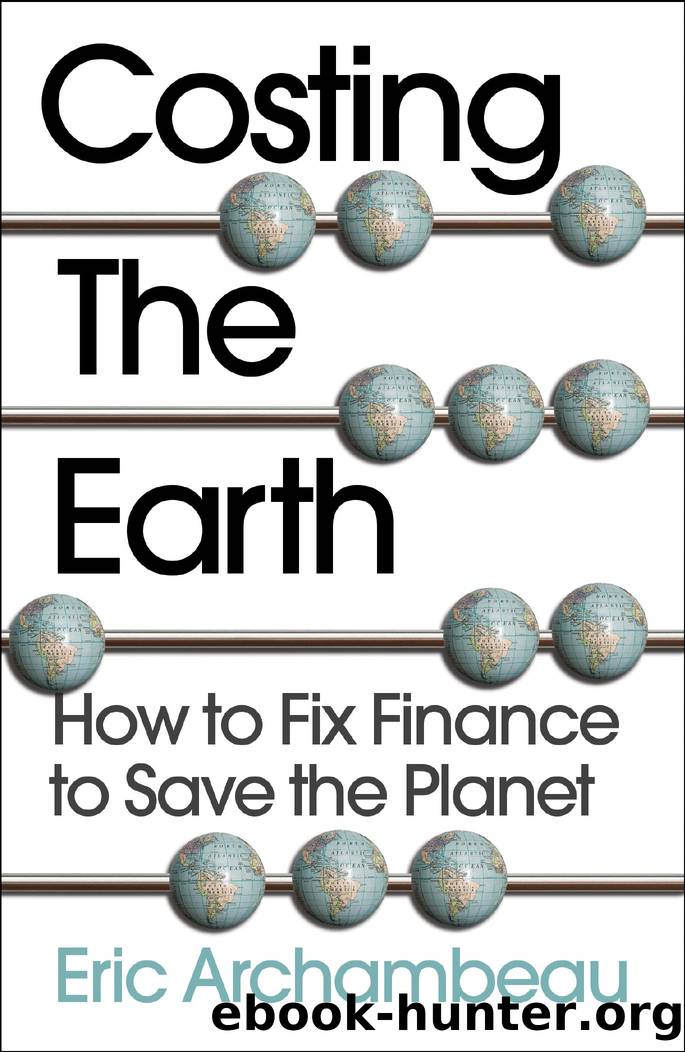Costing the Earth by Archambeau Eric;

Author:Archambeau, Eric; [Archambeau, Eric]
Language: eng
Format: epub
Publisher: Whitefox Publishing Limited
Published: 2022-08-15T00:00:00+00:00
Full transparency
Awareness of what has come to be called sustainable agriculture and the importance of healthy soils â and of farmers themselves â in the food ecosystem has been growing for a while, driven in part by landmark books such as Eric Schlosserâs Fast Food Nation (2002) and The Omnivoreâs Dilemma by Michael Pollan, published four years later. These books, alongside popular documentaries such as Morgan Spurlockâs 2004 hit Super Size Me, trained the spotlight on industrial food production, revealing the often grotesque underbelly of Americaâs processed food industry, how vast corporations have a stranglehold on the American diet and how consumers are steadily paying the price.
Among Schlosserâs most astounding revelations were the laboratories where artificial flavours for French fries, savoury snacks such as potato chips and crackers, breakfast cereals and even toothpastes are designed by âfood technologistsâ.17 Pollanâs acclaimed book zeroed in on, among many other things, the ubiquity of corn and corn derivatives, and how âhigh-fructose corn syrup (HFCS)â had become the leading source of sweetness in the American diet, found everywhere from soft drinks to ketchup, mustard, bread, cereal, hot dogs and hams, helping entrench the USâs obesity epidemic in the process. âThere are some forty-five thousand items in the average American supermarket and more than a quarter of them now contain corn. This goes for the nonfood items as well â everything from the toothpaste and cosmetics to the disposable diapers, trash bags, cleansers, charcoal briquettes, matches, and batteries, right down to the shine on the cover of the magazine that catches your eye by the checkout: corn.â18
These and other revelations, which served to show how industrialized systems, churning out highly processed products, had all but severed the link between soil, âtraditional farmingâ and the plate, led growing numbers of consumers to search for healthier alternatives. As Gary Kleppel phrased it in his book The Emergent Agriculture: Farming, Sustainability and the Return of the Local Economy (2014), âConsumers are now beginning to question the notion of food as a commodity, and to realize the production of safe, nutritious food requires respect for the soil, for living organisms, for ecosystems, and for farmers.â
One powerful way to help restore this link is absolute clarity about the ingredients of the food on our plate â whether weâre talking about a ready meal, organic eggs or even a humble piece of fresh fruit. For Pierre Weill, who is also co-president of Bleu-Blanc-Coeur â a French association created in Ù¢000, which âpromotes responsible agriculture with the objective of improving the nutritional and environmental quality of our foodâ19 â such clarity boils down to three elements: soil diversity, the nutritional quality of animal/plant diet and, just as importantly, measurement.
On this last point, Weill recalls meeting fierce resistance from some organic farmers to the very notion that the nutritional quality of their products should be measured. âI have been meeting organic farmers for forty years,â he says. âThey are very nice people, they really believe in what they do, they really believe in their mission.
Download
This site does not store any files on its server. We only index and link to content provided by other sites. Please contact the content providers to delete copyright contents if any and email us, we'll remove relevant links or contents immediately.
Hypnotic Selling Secrets by Joe Vitale(543)
Buy Back Your Time: Get Unstuck, Reclaim Your Freedom, and Build Your Empire by Dan Martell(530)
Contemporary Reflections on Business Ethics by Ronald Duska Norman E. Bowie Patricia H. Werhane(461)
Tribal Wisdom for Business Ethics by Grace Ann Rosile(395)
How to Have the Energy by Colette Heneghan(379)
On Being a Dictator by Kevin J. Anderson & Martin L. Shoemaker(356)
Bullet Journaling by Silvia Rose(352)
The Fourth Decision by Nelson Randy H.;(338)
Authentic Success by Robert Holden Ph.D(319)
How To Maximize Productivity: The Essential Guide to Optimal Efficiency by Goodwin Ray(317)
Enjoy Time by Catherine Blyth(305)
How To Feel Good With Productivity: Overcome Procrastination Lead With A Vision, Manage Your Time, Increase Productivity, And Do What Matters Most by L. Solari Alfred(303)
Leading From The Heart by Scott Joan(292)
The Selfish Romantic by Michelle Elman(282)
Dopamine Detox: Guide On How To Rewire Your Brain and Live A Life Of Digital Minimalism, Quit Social Media, Do Hard Things, Improve Your Memory, Concentration, And Productivity by Harris Christopher(281)
Success--Discovering the Path to Riches by Napoleon Hill(279)
Delegating effectively by Unknown(277)
Your Time, Your Way by Carl Pullein(273)
Brian Tracy's Success Handbook Box Set by Brian Tracy(272)
